9 Ecommerce Marketing Strategies to Maximize Your Online Sales

Indeed, e-commerce has grown to be a necessary component of world retail. E-commerce retail sales are projected to surpass $4.1 trillion globally by 2024, and in the next years, this number is likely to fly. Therefore, online stores ought to apply efficient eCommerce marketing plans to raise their overall revenue.
With suggestions on how to use them, here is a list of 20+ successful e-commerce marketing strategies to optimize your online sales. There are a lot of different ideas, ranging from simple ways to get new customers to tricks to get returning customers to buy more.
What Is E-commerce Marketing?

E-commerce marketing is the techniques and approaches applied to advertise an online business and its goods or services. Its objectives are to boost revenues, direct visitors into consumers, and generate traffic. This can use several digital marketing techniques, such as:
-
SEO (Search Engine Optimization) to help people find the store more easily in search results.
-
Social media marketing allows one to interact with consumers and present goods on sites like Facebook or Instagram.
-
Personalized offers and promotions in email marketing call for
-
Content marketing uses blogs, videos, or tutorials to enlighten and educate consumers.
E-commerce marketing addresses all initiatives to draw in and keep online consumers, so increasing brand exposure, interaction, and income.
Types of E-commerce Marketing
1. Business to Business (B2B)
Businesses in B2B e-commerce concentrate on offering goods or services to other businesses. This might call for everything from office supplies to software solutions. Since companies buy in volume to satisfy their operational demands,

B2B transactions are often large in value and frequency. Blake Envelopes, for instance, provides tailored designs to companies wishing to mark their messages using colors, style, and sizes to fit certain company needs. B2B models enable organizations to save costs and simplify supply chains.
2. Business to Consumer (B2C)
The most well-known e-commerce model, the B2C one, is in which companies directly sell to individual customers. This approach addresses daily needs like gadgets and clothes as well as more general requirements.
By offering a wide choice of items via a simple-to-use platform, companies like Amazon rule this field. Shorter sales cycles and regular marketing campaigns to draw specific consumers—using email marketing and social media advertisements to increase online exposure and sales—define B2C.
3. Consumer to Consumer (C2C)
C2C e-commerce links customers wishing to offer goods or services to other consumers. These sites facilitate user transactions by serving as middlemen. One such is OLX, which lets people display things they no longer need so others can buy them.
The site lets users negotiate rates and finish transactions either in person or online. This approach lets people profit from personal objects they no longer use and promotes a second-hand market.
4. Consumer to Business (C2B)
Individuals in C2B e-commerce provide goods or services to companies. This kind of transaction turns the conventional business-consumer interaction around. One such example is Affiliate Marketing: on their website or social media such as TikTok, a food blogger links an affiliate product of a kitchen brand. The blogger gets a commission when readers buy via the link.
Positive ratings or hired freelancers for specific projects are often paid for by companies. This approach also covers situations when organizations pay people for insights or user-generated information, therefore enabling enterprises to customize their products depending on customer preferences.
5. Government to Business (G2B)
Usually, for legal or operational reasons, G2B transactions arise when companies engage with government agencies. Businesses might have to pay taxes, get permits, or follow government services online.
To lawfully operate inside a certain jurisdiction, for example, businesses may have to pay internet use taxes or licensing. The G2B model streamlines these exchanges by providing online tools where companies may effectively manage formalities, therefore saving time and lowering regulatory obstacles.
6. Business to Government (B2G)
Businesses in B2G supply goods or services to government departments. This covers anything from office supplies to IT services to infrastructure building. Many times, governments collaborate with companies to upgrade operational effectiveness or public services.
For public outreach initiatives or the development and upkeep of its official websites, a government agency could, for instance, contract with a tech business using digital services. Encouragement of public-private partnerships and guarantees of government body access to necessary resources depend on the B2G model.
7. Consumer to Government (C2G)
C2G e-commerce is people doing business with government agencies mostly via internet channels. This can cover utilities, traffic penalties, or taxes. Governments help people fulfill their responsibilities by providing digital payment solutions, therefore saving them from visiting actual offices.
For both people and governments, for instance, online renewal of a driver’s license or paying income taxes saves time and resources. This paradigm increases citizen accessibility and helps to simplify public service fees.
20+ Ecommerce Marketing Strategies
1. Personalize the Customer’s Experience
One very effective approach to increase online sales is personalizing the buying experience. SuperOffice claims that 86% of buyers would be ready to pay extra for an excellent customer experience. Analyzing consumer behavior will help you provide customized product suggestions depending on past purchases or browsing patterns. Someone who often purchases exercise equipment, for example, could value recommendations for new gear or clothing.
Adding location-based personalizing can also improve relevancy. While consumers in colder climates, could need winter apparel in the same season, those in warm climates, like Florida, could be interested in summer things year-round.
2. Optimize with Search Engine Optimization (SEO)
Search Engine Optimization (SEO) is an important approach for increasing e-commerce revenues today. SEO is the channel that brings the best results for e-commerce websites, according to more than 40% of companies. Conducting extensive keyword research allows you to find hot product categories and modify your content accordingly.

To improve your SEO efforts, you should develop unique material such as blog entries and distinctive product descriptions. This allows search engines to identify your website and improves your results. Create backlinks by partnering with other websites or participating in forums to boost visibility. One more thing, don’t ignore picture optimization—use goal keywords in file names and descriptions to increase traffic through search engines.
3. Making Video Marketing For Your Business Now!
Video marketing remains a successful approach for increasing internet purchases. According to Renderforest’s survey, 44%of respondents are far more inclined to buy a product after watching a video about them. E-commerce businesses may use a variety of video content to engage customers and increase sales.
These video formats might be useful additions to your plan:
- Product Showcase Videos: Highlight your items’ features.
-
Live Streams: Interact with your audience in real time by answering questions and providing updates.
-
Customer Testimonials: Provide good feedback and experiences from pleased customers.
- Educational Content: Provide helpful insights or tutorials about your items.
Take Nike as another example. Nike uses video marketing significantly to engage with their consumers. One of their most memorable commercials was the “Dream Crazy” ad with Colin Kaepernick, which was part of their overall video strategy. This advertisement not only promoted Nike’s products but also conveyed significant social themes that resonated strongly with its target demographic.

4. Reward Loyal Customers
Rewarding loyal customers with a well-designed loyalty program is an efficient strategy to boost repeat purchases and referrals. Loyalty programs provide additional incentives for customers to buy with your brand, such as points-based awards, discounts, free delivery, or gifts. You can modify the program to your needs, determining how frequently incentives are offered and for what activities, such as purchases or feedback.
A great example of a successful loyalty program is Starbucks. Customers earn stars for every purchase made through the app or in-store, which can be redeemed for free drinks, food, and exclusive rewards. The program also offers personalized offers based on buying habits, encouraging more frequent visits.
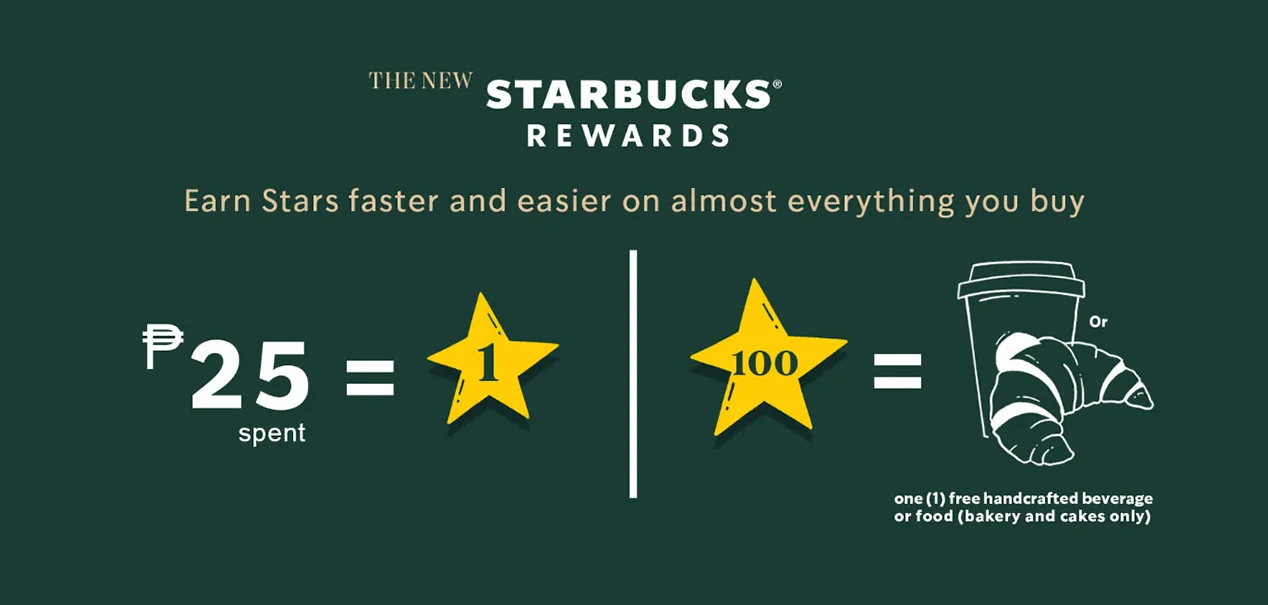
This points-based system keeps customers engaged by offering tiered benefits, such as faster rewards for frequent buyers and special birthday treats. Even if your business isn’t as large, you can apply similar strategies with tools like the Magento 2 Reward Points extension by Mageplaza, which allows you to create point-based rewards and exclusive perks tailored to your customers.
5. Predict Sales Trends
To predict future sales trends, evaluate whether expanding your product line will be cost-effective. You should do keyword research, analyze geographic demand, and monitor social media trends to gauge interest.
A practical method is to pre-sell potential new products. Create pages for each item with high-quality images and engaging descriptions, mark them as “out of stock,” and track which product garners the most back-in-stock notifications. This approach helps identify which product has the highest demand before committing to a full launch.
Read more: Ecommerce trends 2024 - Everything you should know for a successful year
6. Optimize Your SMS for Marketing
SMS marketing enables e-commerce firms to communicate directly with their consumers via promotional texts. A fantastic example is Pizza Hut’s effective SMS and geolocation marketing. Over a 15-month period, Pizza Hut installed geofencing inside a half-mile radius of each outlet. When a consumer registered to their SMS service and moved within range, they got promotional text messages.
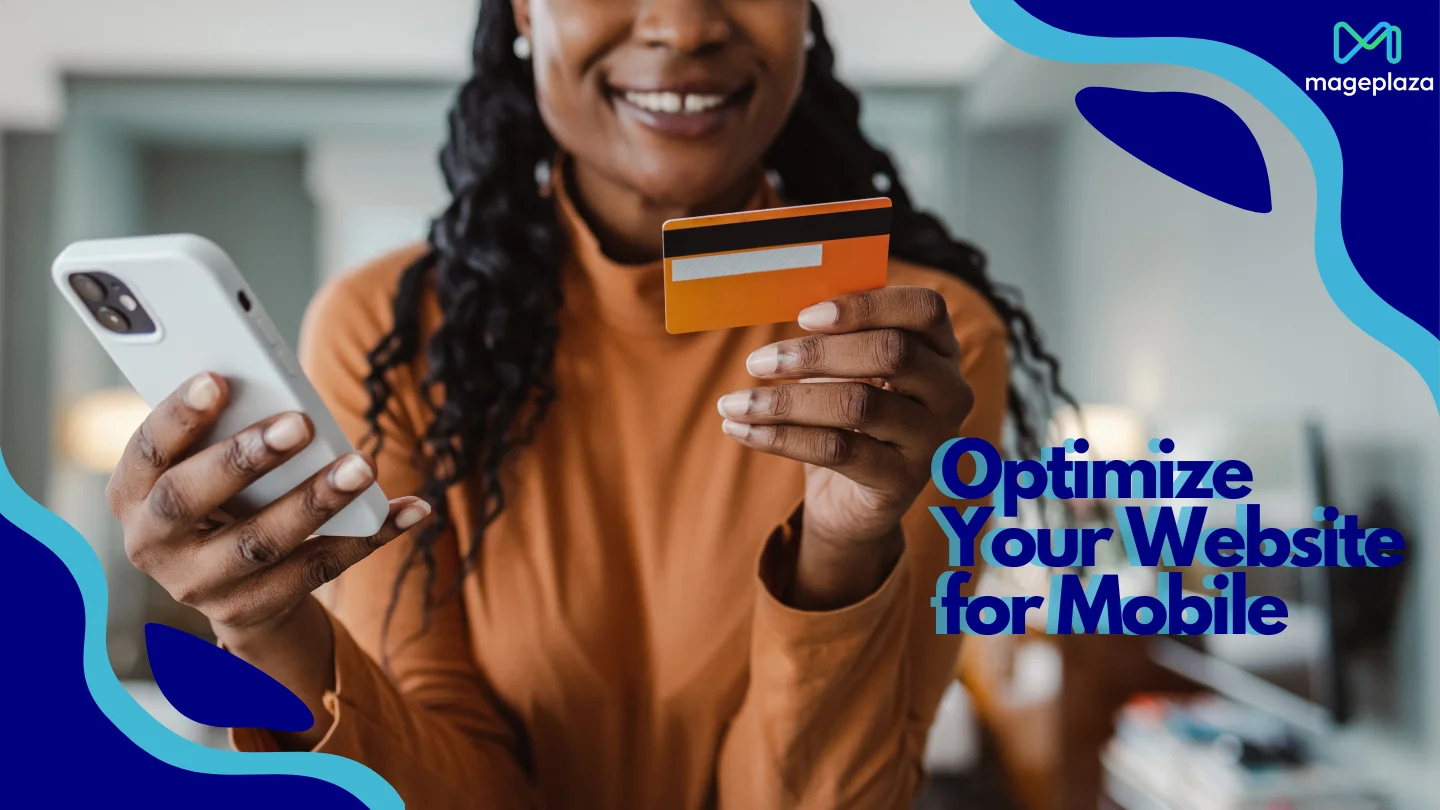
This method improved sales by 142%, outperforming TV commercials 4.4 times and web ads 2.6 times. Even if your firm is small, these ideas may still be used to boost consumer engagement and revenue.
7. Engage via Live Chat
When customers are shopping on your website, live chat is an excellent approach to staying in touch with them. It enables you to give real-time support, answering queries and advising on purchase decisions as they arise.

Many solutions allow you to initiate chat exchanges depending on visitor behavior, such as the length of time spent on a page or the origin of their visit. Live chat, which resolves issues promptly, may assist increase conversions and enhance overall customer happiness, making it an important technique in driving online sales.
8. Customer Shopping: Simple Makes Perfect!
A well-designed online store is critical to retaining consumers and increasing revenue. If your website is hard to use, potential consumers may be turned away. Unclear value propositions, difficult-to-read typefaces, and confusing navigation are all examples of common design problems. You can pay attention to the following critical factors to improve the appearance of your store:
1, Clear Value Proposition: Make sure your website effectively communicates what distinguishes your products or services. Shoppers should understand immediately why your goods are valued and why they should select you.
2, Easily Readable Fonts and a Clean Style: Use fonts that are easy to read and keep the style clean. A crowded or difficult-to-read website can annoy and drive people away.
3, Clear Navigation: Divide your items into clearly recognized categories. Customers may now locate what they’re looking for more easily. Avoid cluttering sites with too many goods, as this might lead to a hectic browsing experience.
4, Balanced Content and Visuals: Maintain a balance of text and visuals. Use high-quality photos to highlight items, and short writing to offer vital facts.
5, Effective Product Organization: To ease the buying experience, ensure that items are categorized. To make the experience manageable, avoid having too many things on a single page.
6, Design Inspiration: Seek inspiration from successful e-commerce websites. For example, Sephora has a good layout with clear product categories and an easy-to-use search option, making it easier for clients to discover what they need.
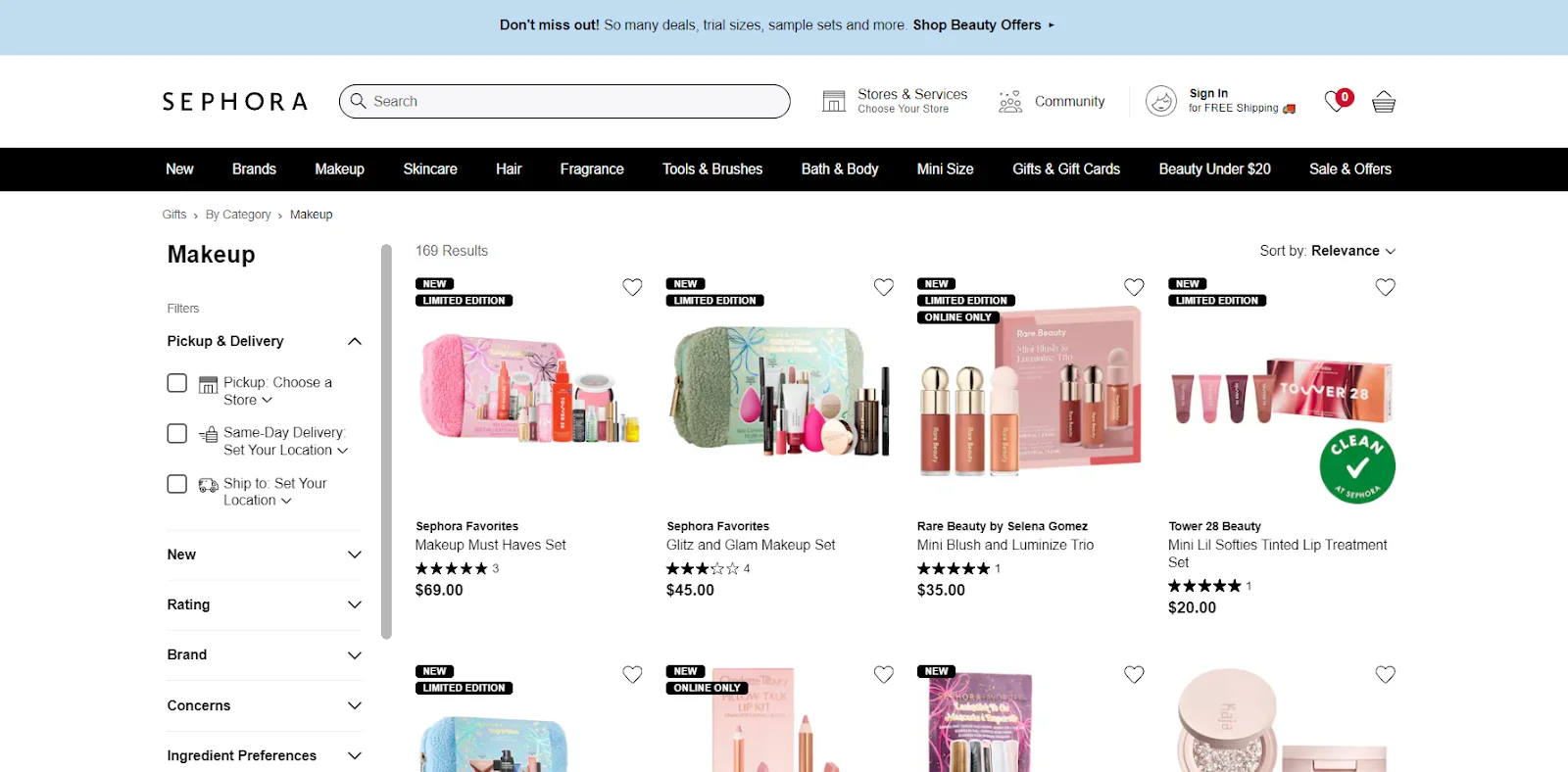
9. Partner with Influencers
Partnering with influencers is an extremely efficient strategy to grow your eCommerce brand. Collaborating with social media stars allows you to reach new audiences, raise brand recognition, and enhance sales.
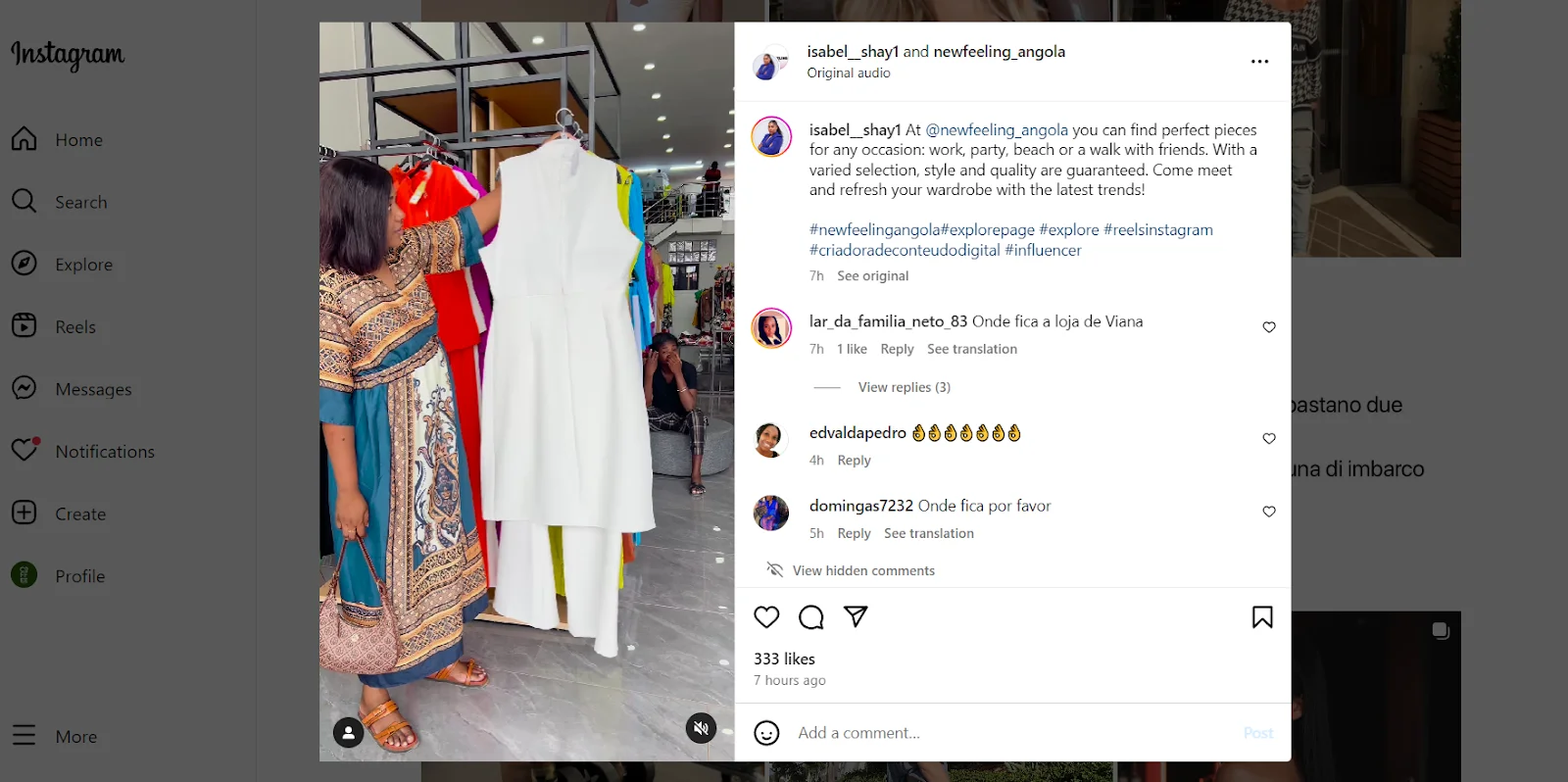
This method shortens the sales cycle since influencers may stimulate quick purchases with their content. With social commerce tools accessible on platforms such as Instagram and TikTok, buyers can easily purchase things directly from influencer posts, making it easier for firms to convert followers into customers.
Popular platforms for influencer marketing include TikTok, YouTube, Instagram, and Facebook.
10. Refine Your Email Campaigns
Capturing email addresses is just the beginning. To make email marketing effective, send valuable and consistent emails that engage your audience. Key opportunities for impactful emails include:

-
Send a welcome email after purchase to build a connection.
-
Offer exclusive discounts or promo codes to encourage future sales.
-
Share newsletters with product updates, tips, and company news.
-
Provide useful content related to recent purchases to enhance customer satisfaction.
-
Run BOGO( buy one- get one) promotions during holidays to boost self-gifting.
-
Thank top customers with personalized messages.
-
Request feedback from visitors who didn’t complete a purchase.
11. Optimize Your Website for Mobile
Over half of all online sales are now made on mobile devices, thus optimizing your e-commerce site for mobile is critical. Mobile consumers are far more likely to make a purchase after searching, owing to greater conversion rates on smartphones than desktops.
As per The Social Shepherd’s e-commerce statistics, 52% of consumers say that a bad experience on a mobile website makes them lose trust.

To remain competitive, ensure that your website is mobile-friendly. This includes employing e-commerce software designed for tiny screens and reducing page load times to keep potential consumers from leaving due to bad performance. You should consider creating a mobile-specific version of your website that emphasizes important content and provides a simple browsing experience.
12. Promote User-Generated Content
User-generated content (UGC) is an effective strategy for establishing trust and authenticity. When potential buyers witness genuine consumers expressing their experiences with your products, they are more likely to feel confident in their purchasing choice.

Customer testimonials and social media shoutouts are both examples of user-generated content. For example, Glossier, a skincare business, displays consumer images and reviews on their website, giving authenticity to their marketing efforts.
PRO TIPS: You can run campaigns or events to boost interaction, but always ask for permission before utilizing consumer content to make sure they are happy with it.
13. Launch Brand’s Affiliate Programs
Affiliate marketing is an effective approach to increasing revenue through partnerships. In an affiliate program, individuals or groups market your items using unique referral links and receive rewards on any purchases that arise. This approach converts your partners into active marketers who apply their platforms—such as social media, blogs, or websites—to drive traffic and sales to your business.
One of the most effective instances of affiliate marketing is how Amazon uses its affiliate network to increase sales throughout its extensive product line. The organization reaches a large audience by collaborating with a network of affiliates that promote Amazon items via unique links.
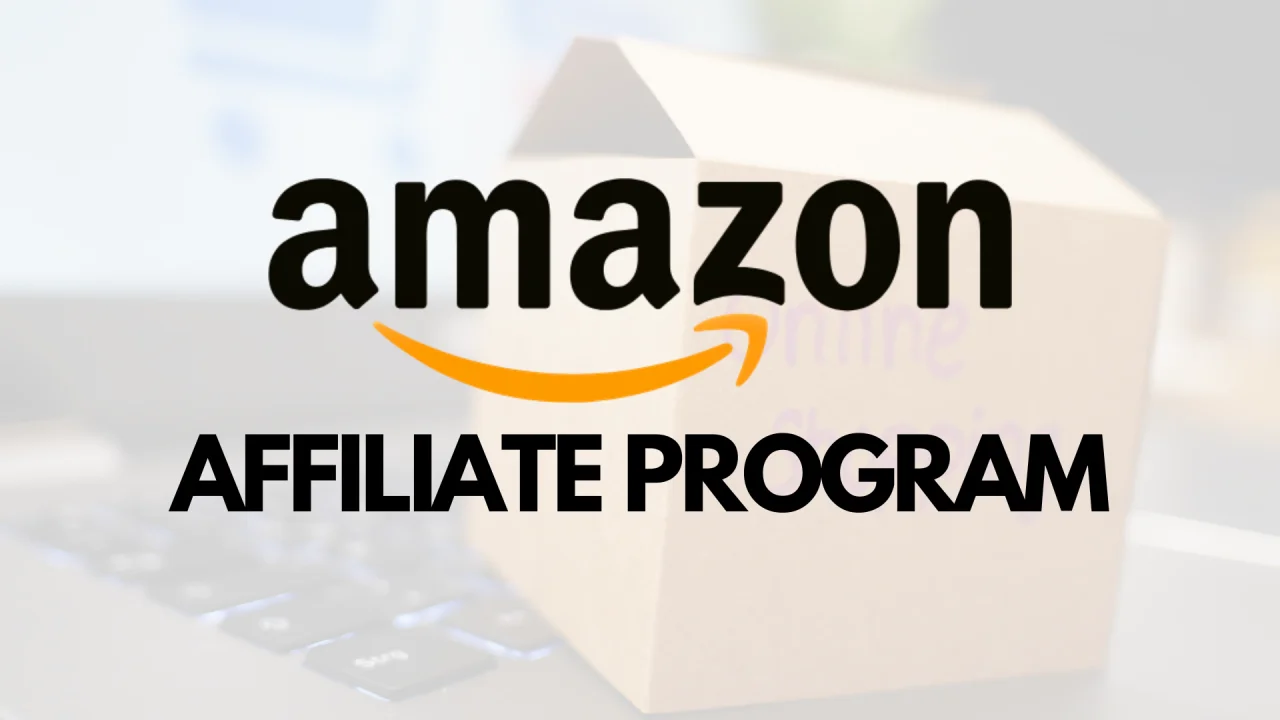
Affiliates receive commissions on sales made through their links, which encourages them to generate attractive content and bring traffic to Amazon’s website. This technique has significantly increased Amazon’s market reach and sales volume.
14. Start Your Content Marketing
Starting a content marketing campaign is an effective approach to connecting with your target audience and boosting your search engine rating. Regular blogging is an excellent approach to engage with clients and keep your website up to date. To increase the effect, prominently display your blog on your online store.
-
Beyond blogging: Consider additional content marketing avenues:
-
Start your podcast: Engaging audio material allows you to share your knowledge and establish a dedicated following.
-
Guest post: Write for other websites and blogs to expand your exposure and gain important backlinks, which can help your SEO.
-
Create in-depth guides: Create thorough information and how-to instructions that help users use your goods efficiently.
15. Set up Workshops Or Webinars
You can get people interested in your goods and teach them about them through webinars and workshops. You could give demos of your goods in person to show how they work.
Another option is to have webinars where you may deliver instructions and have professionals in your field discuss subjects linked to your business.
16. Focus on Your Local Shoppers
Online businesses may potentially increase revenue by targeting local customers. Begin by finding places with a high client concentration and designing location-specific promotions based on their purchasing behavior. Tailor your offerings to coincide with local events or seasons, ensuring that the time is appropriate for their needs.
If you operate from an office or multiple locations, try providing free or reduced-cost delivery to nearby buyers. This not only helps you move things more effectively, but it also improves the customer experience by providing speedier delivery alternatives, making it a win-win for both sales and logistics.
17. Pay-per-click (PPC) Ads for Online Stores
When executing a pay-per-click (PPC) ad campaign, prioritize three important elements: the ad, the offer, and the landing page. The ad should draw attention and effectively describe the offer, which must be completed flawlessly on the landing page. This page should fulfill the promise made in the advertisement, taking visitors seamlessly through the conversion process.
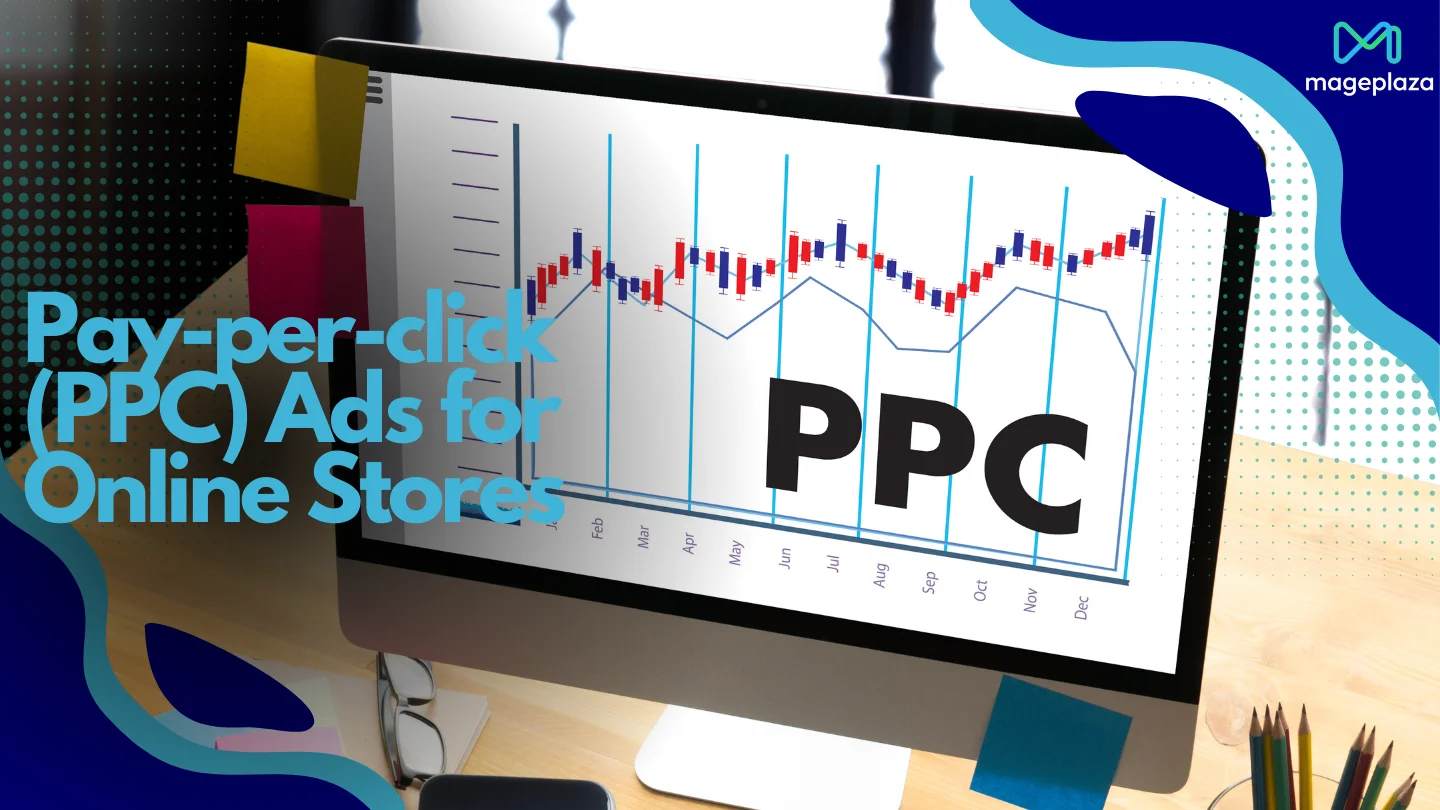
In order to increase the landing page’s exposure in search results and make it more relevant to potential consumers, optimize it for relevant keywords. Make sure the page is simplified, removing any superfluous items that might detract from the main message. To increase conversions, make your product’s essential features stand out.
To assess advertising efficacy, employ web analytics to track UTM-coded traffic sources. Whether you’re using Google Ads, Facebook Ads, or another platform, keeping your ad, offer, and landing page consistent is critical for the success of your PPC campaign.
18. Capture More Subscribers From Email
To increase your email subscriber base, actively promote your email capture campaigns. Email marketing is one of the most cost-effective ways to increase sales and cultivate client loyalty.
Patagonia, the outdoor wear business, thrives at collecting email subscribers due to its strategic strategy. Patagonia’s website prominently features a newsletter sign-up form, which is frequently accompanied by interesting material on environmental projects and product updates. Patagonia also uses its blog and social media networks to direct users to the email sign-up page.

You may greatly grow your subscriber base by prominently promoting email capture forms and giving incentives such as special material or discounts. Implementing these tactics will improve your email marketing efforts and lead to increased sales and client retention.
19. Prevent Cart Abandonment
Cart abandonment is a key difficulty for online merchants; according to Getsitecontrol’s most recent research results, the average shopping cart abandonment rate is 84.27%. To address this issue, try launching an email recovery campaign to re-engage customers who did not finish their transactions.
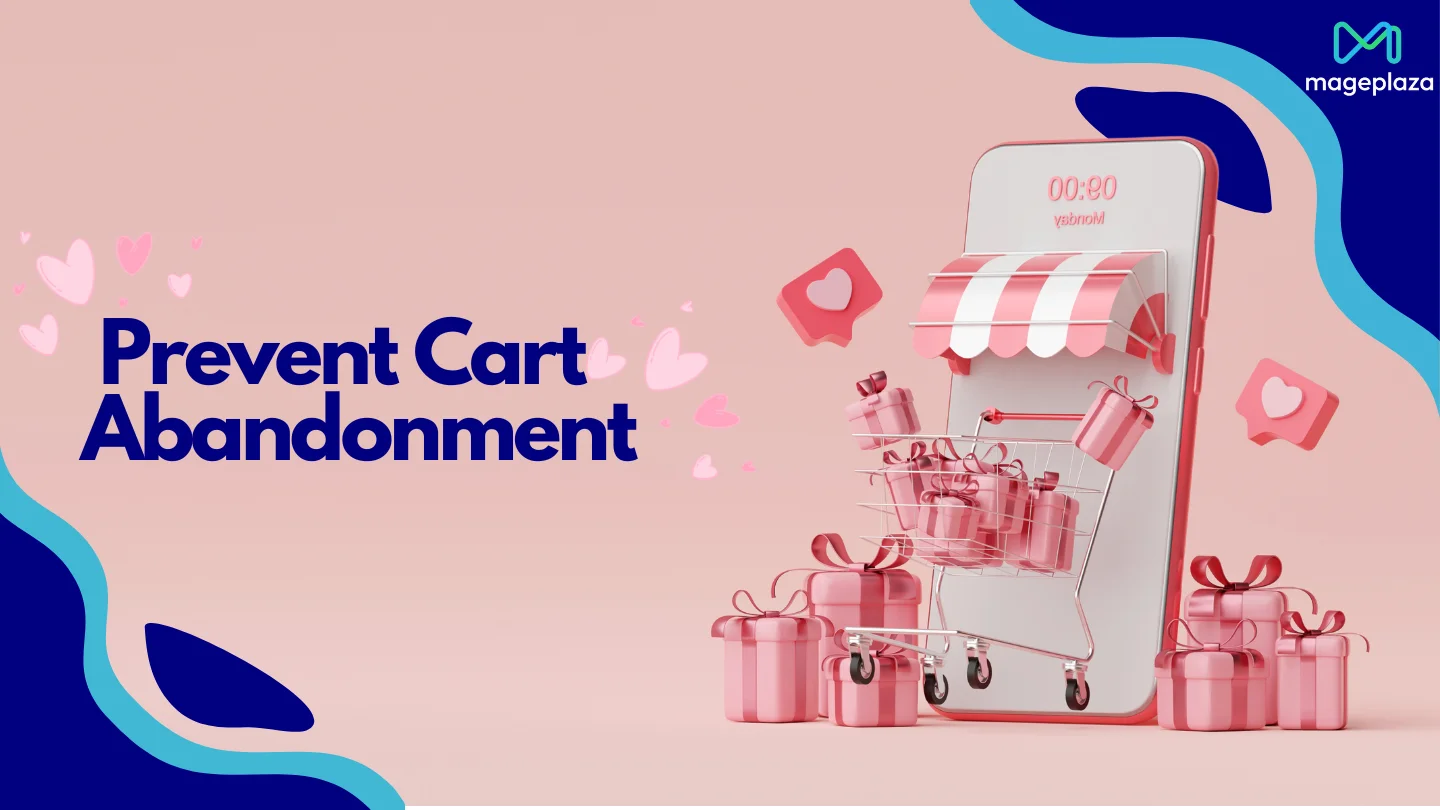
You may successfully decrease cart abandonment by sending follow-up emails with a discount to encourage customers to complete their purchases. Create recovery emails to remind clients of the things they left behind while emphasizing the benefits of completing their transaction. This strategy not only encourages returning customers but also increases your chances of turning abandoned carts into purchases.
20. E-commerce Retargeting
Retargeting is an e-commerce marketing strategy that tracks clients who have previously visited your website and presents advertising to them when they browse the internet to entice them to return. When these visitors return to your website, they are far more likely to complete a purchase.
To properly manage a retargeting campaign, ensure that your adverts are as targeted as possible. Was the buyer looking for a specific product? Make sure the advertising displayed to them is for that exact product and links to the product’s website. Just as with SEO and PPC marketing, it’s necessary to present the information the user is seeking the moment they click on your ad.
21. Implement Social Media Marketing
One important way to connect with customers is through social media marketing, which takes place where people spend a lot of time on them. Social networks like Instagram, Twitter, and Facebook have billions of users, so they give brands a chance to connect with their audience in a real way.
Brands can build relationships and give useful product information by sharing relevant content and responding to comments. To get the best results, marketing teams need to pick the right channels that meet the tastes of their target audience. For example, Twitter and Instagram have different content needs.
FAQs
1. Which e-commerce business platform works the best?
This question doesn’t have a single right answer. The best channel for you will rely on your goals, income, and the people you want to reach. Search engine optimization (SEO), pay-per-click (PPC) ads, social media marketing, email marketing, and content marketing are some of the most popular platforms.
2. How can I get more people to buy things from my e-commerce site?
There are lots of things you can do to make your e-commerce business more successful. One tip is to make it easy for people to find their way around your website.
-
Making a strong request to act
-
Giving customers several ways to pay
-
Giving clear information about the product
-
Giving away free shipping
3. What is the best way to tell if my marketing for my online store is working?
There are a lot of different ways to figure out how well your e-commerce marketing is working. Here are a few typical metrics:
- Traffic to websites
- Rate of conversion
- Value of an average sale
- The lifetime value of a customer
- Rate of return on investment (ROI).
Final Thoughts
With these 20 e-commerce marketing strategies , Mageplaza hopes that you can drive traffic, sell more products, and retain customers. Think about your main goals and focus on them. Apply the most suitable strategies to achieve those goals, and if you still have time and resources, try all of the tips. Don’t forget to leave a comment and continue reading interesting new posts!






![Top 20+ Must-have Shopify Apps for 2025 [Free & Paid] - Mageplaza](https://cdn2.mageplaza.com/media/blog/must-have-shopify-apps/top-must-have-shopify-apps.png)
![[2025 Updates] Top 10+ Upsell Apps for Shopify - Mageplaza](https://cdn2.mageplaza.com/media/blog/best-upsell-shopify-app/cover.png)